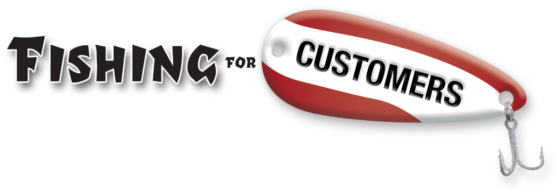Originally published January 7, 2006.
Too many times we design an advertising schedule to reach the “average consumer.”
If you look at the usage of media by consumers, it’s easy to come up with averages. It’s much harder to schedule your ads for maximum return on investment.
Take radio listening, as an example. Dividing the number of people listening at any particular time by the number who have listened over the course of the week, and then multiplying that fraction by the time they listened will give us an average “time spent listening,” say, 20 hours per week.
But 20 hours is very misleading. Seminal researcher Alfred Politz1 divided the audience into equal fifths (quintiles). He discovered that not all radio listeners are created equal.
When the average is 20 hours per week, the heaviest users, (the top 20%), stick with their favorite station for a full 60 hours per week. At the other extreme, the lightest users listen for only 2 hours per week.
Within each quintile (equal fifth) the average listening might look like:
Several studies 1 have confirmed that consumers of media are not equal, even within the medium. Each medium has very heavy consumption at the top quintile, which grows progressively lighter as each additional quintile enters the equation. This same pattern occurs in television viewing, reading of newspapers and magazines, and even the reading of outdoor signs.
It’s been demonstrated that the average person needs to be “exposed” to your ad a minimum of three times within each seven day period 2 for the ad to be effective at motivating that person to shop with you.
But, with each of our quintiles listening for progressively shorter periods of time, it’s going to take more ads to reach each successive quintile.
And that makes sense, doesn’t it?
Our top quintile listens 60 hours per week. If we run 3 ads per week, they’re likely to hear all of them.
The bottom quintile listens for only 2 hours per week. Unless the ad runs during those two hours, they’ll never hear it.
To assure enough ads that the bottom quintile will be exposed to three of them, we’ll need a schedule of 184 ads 3.
184 ads? Per week? How much would you have to pay for 184 ads per week? I’m willing to wager that you can’t afford such a heavy schedule. At least, not long-term. You can’t afford to persue the bottom quintile. Without a monster advertising budget, one fifth of the potential audience will never hear your ads.
Perhaps you could stretch the budget enough to afford 53 ads. That’s a schedule that could motivate the fourth quintile. Congratulations. You’ve broadcast enough ads to persuade quintiles one, two, three, and four.
Of course, we now have another problem.
The first quintile only needed 3 ads to “get it.” Run 50 additional ads per week once they understand your message, and it’s highly probable that you’ll irritate those listeners. Annoy them this much and they’ll refuse to do business with you. Somewhere around ad number 17 they’ll tune in some other radio station.4
Customize your schedule for the heavy listeners and the light listeners will miss your ads. Plan to impact light listeners and you’ll repel heavy listeners.
You’re going to miss half of the audience. There’s no way around it.
Which half do you give up?
The expensive half, of course.
Your most cost-effective solution is to schedule enough ads to reach quintile one, quintile two, and about half of quintile three. Wizard of Ads © media buyers have determined that, on most radio stations across the United States, a schedule of 21 ads 5 each week will provide the greatest sales impact from the least number of dollars invested.
Newspapers have a similar weekly buildup of awareness. Like radio, one ad is minimally effective. It takes the same three exposures a week to make newspaper advertising provide maximum return on your advertising investment. We’ll look at newspaper scheduling next time.
And depending upon the purchase cycle, as few as 2% of those people will be “in the market” on any given week. You’ll need to run this schedule next week to get the people who are ready to buy next week. You’ll need to run it the week after that to reach the people who are ready to buy that week. You’ll need to… well, you understand. You’ll need to run it every week that you intend to stay open for business.
However, some good news: the light users of one radio station tend to be the heavy users of another. And the average listener tunes into 3.6 stations per week. Find stations which share the same listeners, run 21 ads per week on each, and start getting spectacular results – assuming, of course, that your message is compelling and your offer is appealing.
Your Guide,
Chuck McKay
Chuck McKay gets more people to buy what you sell.
Questions about scheduling ads for the highest return on your advertising investment may be directed to ChuckMcKay@ChuckMcKayOnLine.com.
If you know someone who would find this article useful, please share it.
Your comments are always welcome. How does your company schedule its ads?
1. Beginning with the 1963 Politz Study of New York Radio.
2. Effective Frequency, The Relationship Between Frequency And Advertising Effectiveness, Mike Naples. ANA Publishing, 1979.
3. All figures based on Radio’s New Math, © 1978 Group W Radio.
4. Radio Program Directors HATE ads which run in double digits daily. Of course, Program Directors also know that about the time listeners are just learning the words, Disc Jockeys say they’ll puke if that song plays again. Through the nature of their jobs Disc Jockeys have long Times Spent Listening.
5. 21 ads per week, plus or minus two.





